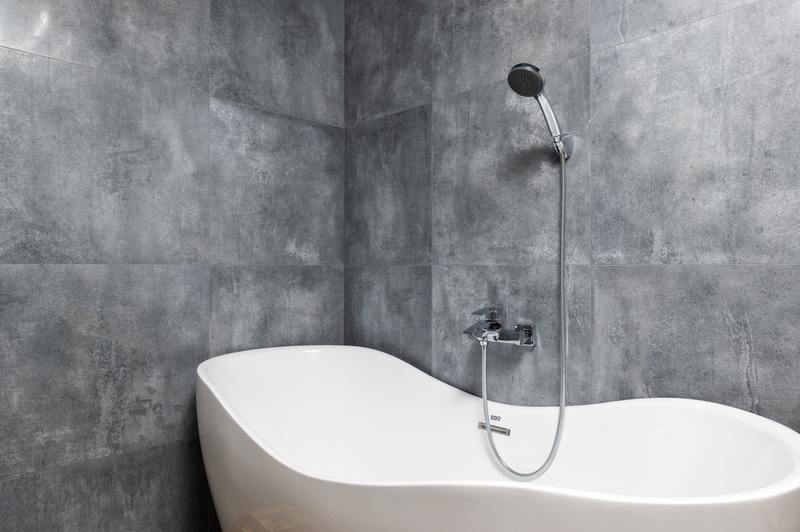Mold and mildew flourish in moist, dark areas, including marble showers. That brings us to the question: how to clean mildew from marble shower?
Marble showers require gentle cleaning regularly, unlike tile and grout, which can tolerate scouring with heavier cleaning agents. The majority of commercial bathroom cleansers are too strong for marble, and they can etch or otherwise harm it.

We can remove mold with a diluted bleach or peroxide solution, but it’s best to avoid mold growth altogether. Here are some article recommendations on how to get rid of mildew smell in bathroom that will surely help along the process.
Are Marble Showers Difficult To Keep Clean?
On the other hand, marble has a terrible reputation for being difficult to maintain. However, let’s go through what’s not safe to use on marble and stone tile.
It’s important to know what to avoid while cleaning marble tiles. Here are some steps in cleaning marble showers:
Step #1. Combine half a cup of chlorine bleach or hydrogen peroxide with one-gallon warm water in a bucket.
Step #2. Make sure to put on your pair of rubber gloves and use a sponge or rag to apply the cleaning solution to the marble shower.
Step #3. Allow the mixture to sit for at least ten minutes after thoroughly saturating any moldy spots.
Step #4. Wipe down the marble shower with a sponge or towel, rinsing it off in the bucket as you go.
Step #5. Use the faucet to thoroughly rinse the marble shower. You can also rinse the shower by filling the bucket with clean water and pouring it over it.
Step #6. Using a cloth, dry the stone.
Cleaning Solutions And Labels
You should avoid most of the popular store-bought cleaners. They usually have strong chemicals in them that might etch, discolor, or dull your marble or stone tile.
Check the labels carefully to ensure that cleaners are safe for natural stones, such as marble. Ensure the label on the marble or stone you’re using states it’s safe.
Do not use it if the label didn’t specify stone or marble. It will only ruin the material.
High-pH (acidic) cleaners can etch marble and stone, dulling the luster and possibly pitting the stone. Although vinegar is a standard household cleaner, it is too acidic for marble and other natural stones.
It would be best, and we also suggest that you don’t use vinegar on marble.
When cleaning a marble shower door, most people use vinegar. However, do make a point of keeping the vinegar away from the tile.
Safely Cleaning Mildew On Marble Surfaces
If a 50% detergent solution fails to remove mildew spots from marble, you’ll need to make a ratio of 1:1 solution of bleach and water, then spray or pour the mixture onto the stone’s surface and scrub it with a non-scratch bristle brush or nylon brush.
Allow at least 15-20 minutes for the bleach and water solution to rest on the marble surface before rinsing with water. After removing the mildew, clean the entire shower stall with a natural-stone cleanser before sealing it with marble and granite sealer.
You can check out and read this article to know why does my bathroom smell like mildew.
The Dangers Of Mildew And Mold
It can become slippery when excessive mold builds on the marble tiles lining the shower stall floor. Other issues arise from the fungi and mycotoxins found in mildew and mold colonies, leading to infections and neurotoxic reactions.
Mold can ruin the grouting between stone tiles if it grows out of hand. You’ll need to regrout the tiles and then seal the grout if this happens.
Make Sure Your Marble Is Dry
Mildew is one of the difficulties to be aware of when it comes to marble showers. Hard minerals like calcium and magnesium, which generate the phenomena known as hard water, cause water stains on marble surfaces.
Excessive moisture on marble causes mildew and mold colonies, which you can treat with a squeegee tool, sponges, and absorbent towels. If at all possible, all members of your home should contribute to this drying effort on a regular basis, ideally after each shower.
Keep Your Marble Under Wraps
The sealer coating applied when marble is installed in your shower stall won’t last forever, though picking a good quality sealer can help you maintain a fresh and firm seal. Mildew that occurs on properly sealed marble can be readily removed using a marble and granite shower cleaner.
If the seal has weakened, however, the tiny spores that proliferate into colonies may be able to penetrate the porous surface, necessitating a more involved cleaning and removal procedure.
Conclusion
Mold can ruin the grouting between stone tiles if it grows out of hand. If this happens, you’ll need to regrout the tiles and then seal the grout.
Given the steps above, you now know a lot about how to clean mildew from marble shower.
